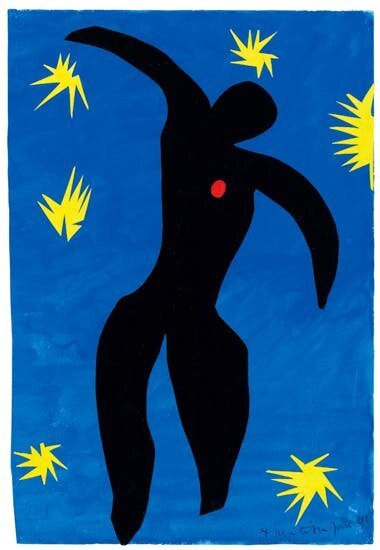Practices for creating body awareness
“There is no “supposed to be” in bodies. The question is not size or shape or year of age, or even having two of everything for some do not. But the wild issue is does this body feel, does it have the right connection to pleasure, to heart, to soul, to the wild? Does it have happiness, joy? Can it in its own way move, dance, jiggle, sway? The body is an instrument of knowing.”
I was hiking in the foothills outside Salt Lake on a snowy and sunny afternoon. I was not feeling “great” in my body. I started to judge how it swayed, how my breath felt heavier than usual. I felt fatigued and drained. I noticed my body feeling older and different than it has over the years. I felt heavy, as though gravity was pulling me over, and I did not want to go any further. I stopped. I felt my feet in my wet boots and wiggled my toes. I noticed the connection with the earth. I softened my gaze and closed my eyes. I saw how I felt inside the body. I was breathing. My heart was beating fast. My hips ached, and my lower back felt tight. I could have stopped there and judged the pain I was feeling. But I felt the urge to go even deeper with my felt sense. I noticed as I stayed and was even more present with the sensations I felt a softness, a lightness, and spaciousness. Standing on the side of the mountain, I put my hand on my heart and said “hello” to this body, just as it was at that moment. I felt calm, almost as though my body was responding. I stood in silence while I made contact with my companion: the body.
In our society and due to oppressive systems, the body has been a place of criticism, neglect, “fixing,” needing to be different, a marketing tool, and a space where many of us may have experienced deep trauma. We may not feel safe in our bodies due to living in a very disembodied society. The body holds memories of our lives, including trauma histories and memories. It may hold words and acts of racism, a sense of otherness, and how we may have been taught that our bodies are not “okay.”
Yet, the body is an instrument of knowing. It is a tool for self-reflection, presence, and understanding. Moving from body shame to self-love is a path of inquiry and insight. How we value and honor our own bodies impacts how we value and honor the bodies of others. Body awareness, body positivity, and being embodied is a PRACTICE. Embodiment is the practice of attending to your sensations. Awareness of your body is a guiding compass to help you feel more in charge of your life. Somatic awareness provides a foundation for empathy, enables you to make healthy decisions, and gives critical feedback about your relationships with others. An embodiment allows us to feel more whole as a human being.
We invite you to join us in a daily practice of radical self-love by bringing more awareness to your body, and the felt sensations and unpacking the stories we hold about our bodies.
A Bodyful Moment
Take a moment and check in. What do you feel inside of your body? Notice your breath, your heart rate, or any areas of tension. Are you thirsty or hungry? Are you cool or warm? Do you feel awake or tired? Are you sitting up tall or slumped in your chair? Are you aware of any emotions? Where do you sense these emotions in your body?
As you reflect upon your answers to these questions, you might notice the desire to move, change your posture, take a sip of water, eat a snack, or grab a sweater. When you sense and feel your body, you can take actions that help you care for your needs. This is self-regulation, a process of responding effectively to emotions or arousal states you sense in your body. Train yourself to check in with your sensations regularly to track what you are aware of and what you need to stay in balance.
Write a letter to your body
This can be a free writing exercise where you continuously write for 5 minutes without putting the pen down. No edits, no critiques of the quality of the writing. You may want to reflect on your body's senses while you are writing. Some prompts you may want to use:
My body speaks…
I forgive…
I feel…
I want to know…
This writing can be a starting point to learn more about your relationship with your body.
Be in Movement
When our body is stagnant, we can feel energetically stuck. It can be helpful to bring a playfulness to the movement. Movement can include going for a mindful walk, noticing your breath, and connecting your feet to the earth. Movement can be dancing to your favorite song with your child. Movement can mean taking a yoga class, running, or just swaying back and forth while in a meeting. It can also mean connecting with the rhythm of our breath or heartbeat or wiggling our toes. When we move with intention and with awareness, we learn to understand how our body moves. This can support a larger sense of who we are in movement.
Create a body-positive affirmation
Affirmations can soothe us when used in conjunction with meditation. Choosing an affirmation is about finding a phrase or word we desire to live by. An affirmation can feel like a growing edge that may feel a little uncomfortable to name. Naming an affirmation can support our thinking patterns and reframe negative beliefs about ourselves and our bodies. Here are a few you may want to try:
I am a vessel of radical self-love.
My body is my companion.
I am learning to trust my body.
Practice saying this affirmation numerous times a day. You could say it out loud while walking, while in the car on the way to work. or in moments when you need to challenge internalized beliefs about yourself. Affirmations can be used anytime throughout the day that feels supportive.

